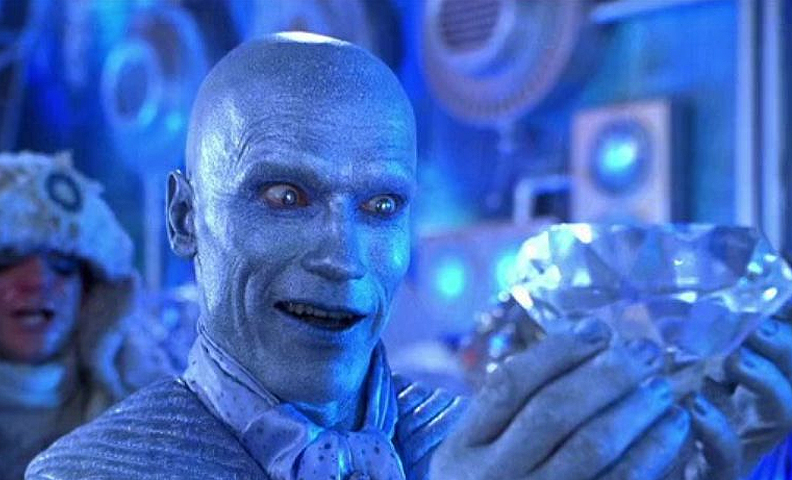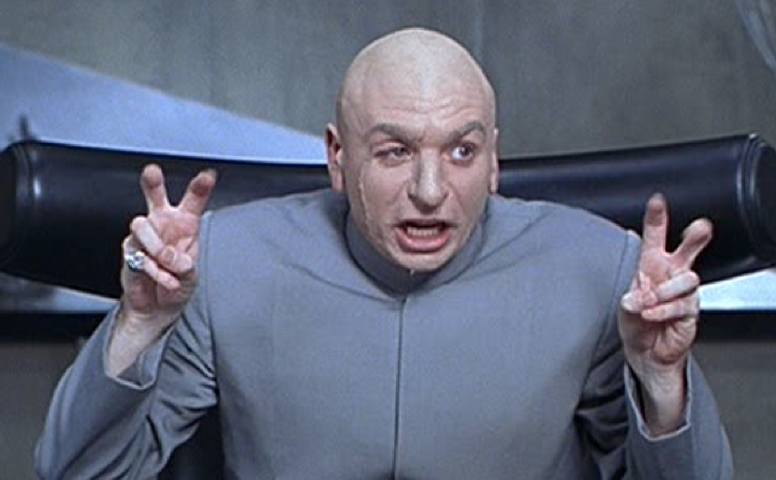In the real world, the gradual loss of scalp hair, is just a drag. In the reel world, it’s a flag, signalling eeeee-vil…

Dermatologists treat skin, but also problems with the hair and nails. Here is a classic movie moment showing a bald guy gone bad. As Kurtz in the war epic "Apocalypse Now", Marlon Brando is evil personified. Most men and women with hair loss (alopecia) are not morally corrupt, and can be helped by treatments from topical lotions, prescription pills, to hair transplant surgery.

Baldness is one of the more common traits of movie villains. Roots of this trend (get it?) may be from comic books. Heroes tend to have a full Superman-style forest of hair. Yet the scalp of his major rival, Lex Luthor, is a follicular desert. It certainly is easier to illustrate a hair-free scalp then trace out a fancy 'do.

Major actors are willing to shave their scalps to cash a comic book movie paycheck. Jesse Eisenberg, Gene Hackman, and Kevin Spacey were all sheared to play Lex Luthor in various flicks. During the shooting schedule, we recommend sunscreen for these thespians, as non melanoma skin cancers can arise years after scalp gets sunburned. Now Lex is really ticked!

"Batman and Robin" features Arnold Schwarzenegger in the villainous role he played between being "The Terminator" and "The Governator." In this case he shows that Mr. Freeze loses large amounts of body heat via his bare scalp. Dermatologists use a cold liquid nitrogen spray to freeze and destroy pre-cancerous lesions that can eventually form from repeated sun burns. For men with extensive hair loss, sun protection is recommended to avoid just such treatments to a UV damaged pate.

A hairless scalp can look menacing. Originally, actor Bryan Cranston played the goofball dad on "Malcolm in the Middle." After his more recent cable TV character underwent chemotherapy, Cranston broke bald on "Breaking Bad." His squeaky clean haircut was tossed out along with his sense of right and wrong.

From hairless to hair-some: easily one of the most chilling performances of 20th century film is Anthony Hopkins' turn as serial killer/fine food connoisseur, Hannibal Lecter in "The Silence of the Lambs." Often film baddies are shown totally bald, but in this case Lecter's hair is merely thinning. To Hopkins' credit, we are just as scared of Lecter despite the presence of some hair. Male pattern alopecia (hair loss) is due to genetic factors and the effect of testosterone hormone on central scalp hair follicles over a lifetime. Finasteride (propecia) is a pill that minimizes that effect. To our knowledge, Propecia can be taken with or without fava beans and a nice chianti.

Here a would-be murderer is played by would-be actor Keanu Reeves in "I Love You to Death." The discrete bald spots seen on Keanu's scalp and beard are diagnostic of distinct form of baldness, alopecia areata (AA). AA shows patchy hair loss, usually isolated spots on the scalp and beard, as shown here. The cause is unknown, but it is not inherited or contagious. Lesions tend to come and go, and respond to cortisone creams or injections.

Usually patchy, alopecia areata results from a low grade inflammation that shuts down hair follicle activity. Rarely it can progress to either loss of all of the scalp hair or even all body hair. In Oliver Stone's "JFK," actor Joe Pesci portrays historical figure David Ferrie, who some feel was involved in President John F. Kennedy's assassination. On the left, Pesci wears a phony toupee and has pencilled in eyebrows. The actual Ferrie (right) had extensive alopecia areata, also shown with seedy wig and criminal use of eyebrow pencil. Many people with extensive alopecia hide it in this fashion. Systemic treatments for this type of hair loss are under active investigation, much like the investigations into the conspiracy-inspiring death of JFK.

Tinsel Town is the land of excess. Why use one dermatology condition, when a producer can double up? Here is the classic example of Donald Pleasance as Stavro Blofeld from the '60s James Bond era. Bald as Mr. Clean, and deformed like Scarface. And if this looks familiar...

...Blofeld was the direct inspiration for Mike Myers' character Dr. Evil in the Austin Powers franchise. Just naming this character Dr. Evil was not enough, they want for bald and scarred too. And Evil begats evil...

Dr. Evil's clone is Mini-Me. While the genes for alopecia can be inherited, a clone wouldn't grow a scar without earning it with trauma. Dr. Evil has another offspring with follicular issues...

Dr. Evil's son Scott Evil is a movie example of dermatology cause and effect. As his male pattern baldness worsens, he turns more mean-spirited. Maybe time for a scalp (and ethical) transplant? In addition to finasteride pills which reduce the extent of male pattern hair loss, scalp transplants can be performed. Costly and painful, restoration is an ongoing effort, since the genetic triggers remain. Research toward novel treatments marches forward. Maybe there will be a alopecia panacea before the next Austin Powers sequel hits theaters!
Next »
« Back
















